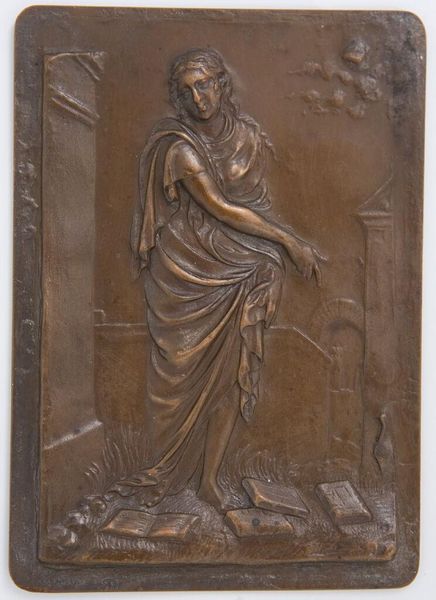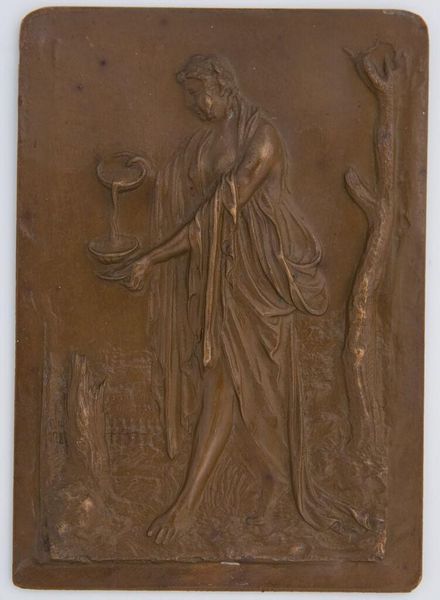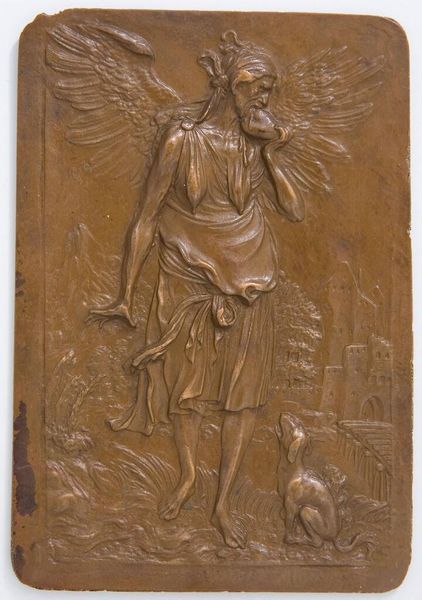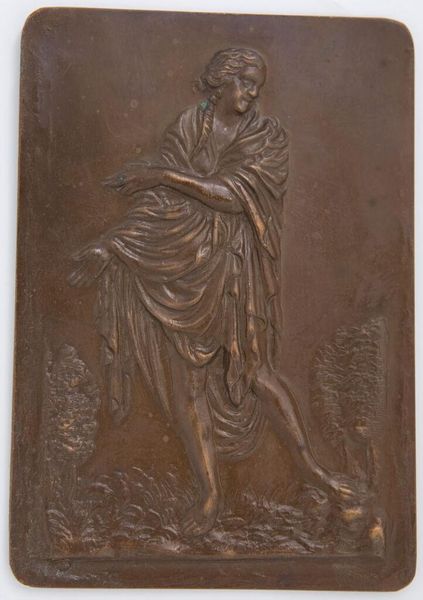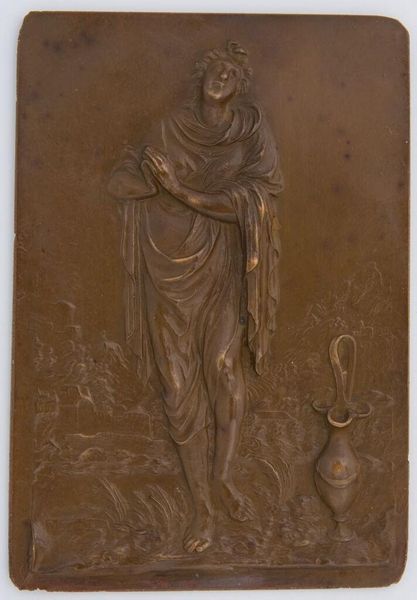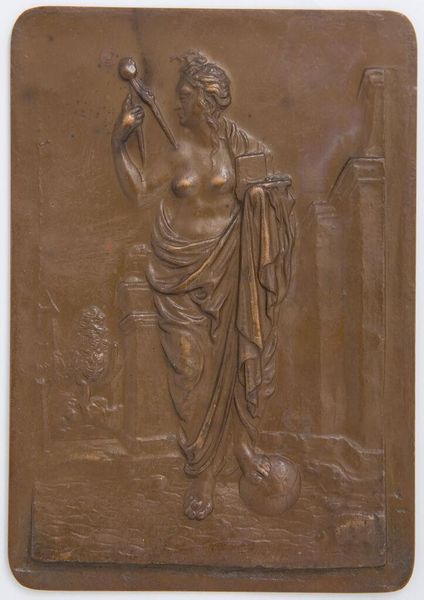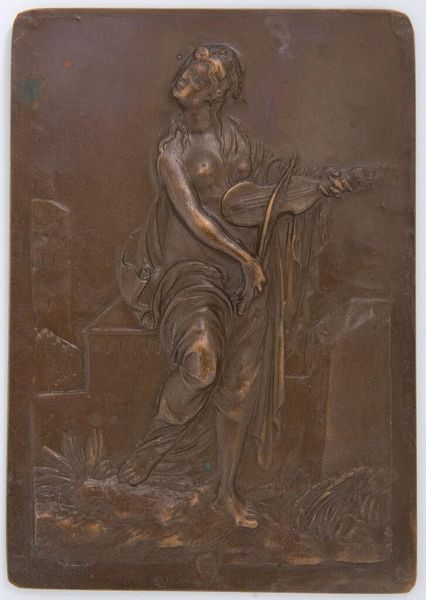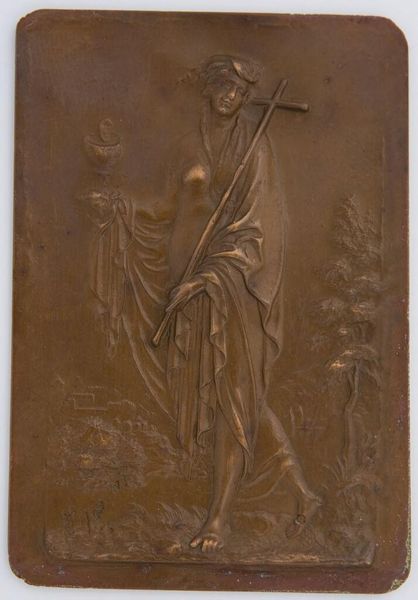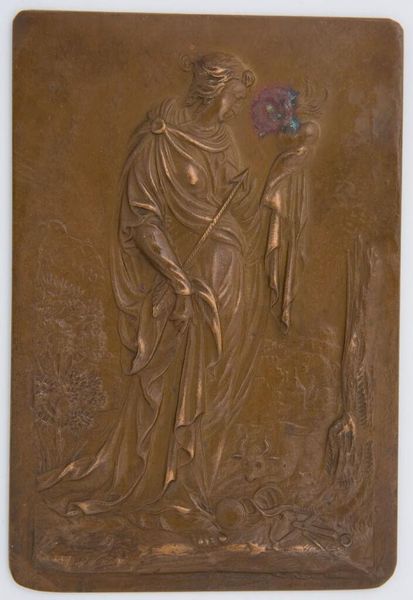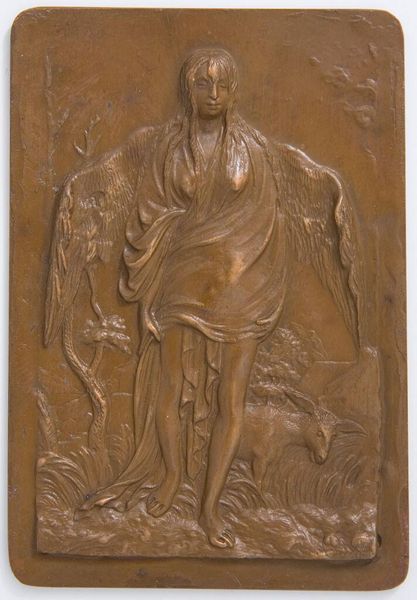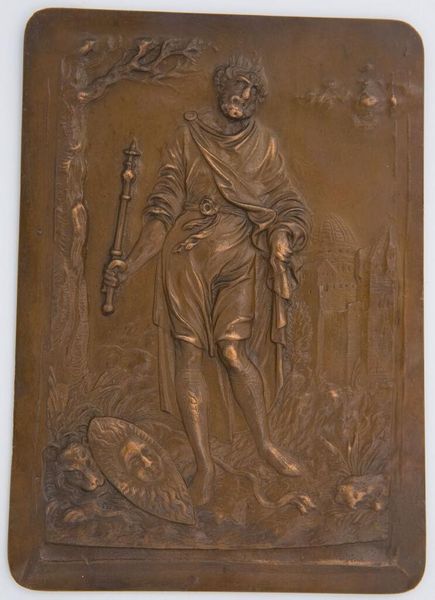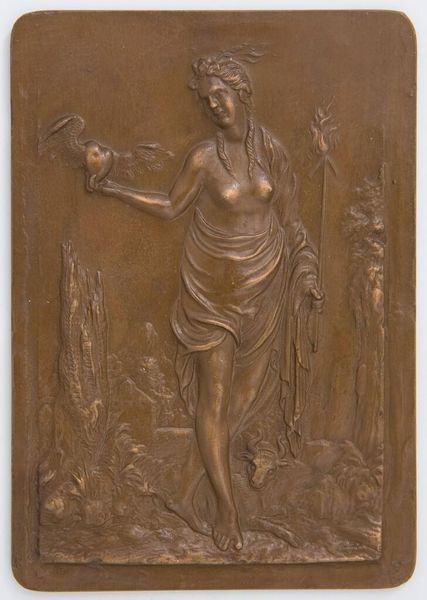![Semi-Centennial Medallion of the Wisconsin Academy of Sciences, Arts, and Letters [reverse] by Léonard Crunelle](/_next/image?url=https%3A%2F%2Fd2w8kbdekdi1gv.cloudfront.net%2FeyJidWNrZXQiOiAiYXJ0ZXJhLWltYWdlcy1idWNrZXQiLCAia2V5IjogImFydHdvcmtzLzBjOWYyM2Q4LWRlZjEtNDNiYy1iZGQzLWNlOThkMzNiMzkwYi8wYzlmMjNkOC1kZWYxLTQzYmMtYmRkMy1jZTk4ZDMzYjM5MGJfZnVsbC5qcGciLCAiZWRpdHMiOiB7InJlc2l6ZSI6IHsid2lkdGgiOiAxOTIwLCAiaGVpZ2h0IjogMTkyMCwgImZpdCI6ICJpbnNpZGUifX19&w=1080&q=75)
Semi-Centennial Medallion of the Wisconsin Academy of Sciences, Arts, and Letters [reverse] 1920
0:00
0:00
relief, bronze, sculpture
#
sculpture
#
relief
#
classical-realism
#
bronze
#
sculpture
Dimensions: overall: 7.3 × 4.76 cm (2 7/8 × 1 7/8 in.)
Copyright: National Gallery of Art: CC0 1.0
Curator: Looking at this relief, its stoic presentation almost emanates power. It’s a bronze medallion titled "Semi-Centennial Medallion of the Wisconsin Academy of Sciences, Arts, and Letters," reverse side, created in 1920 by Léonard Crunelle. Editor: It certainly has a classical feel. I notice the Latin inscription – "Naturae Species Ratioque" – but the overall aesthetic is really compelling. Is there a deliberate link back to the visual vocabulary of ancient Greece? Curator: Absolutely, particularly when understanding its purpose. This piece celebrates the fiftieth anniversary of the Wisconsin Academy, an organization deeply invested in promoting science, arts, and letters. Crunelle drew inspiration from classical imagery as a means to connect these values. Editor: I'm especially struck by the central figure, possibly a representation of Athena given the helmet. But this representation seems rooted in ideals, wouldn't you say? I see her positioned next to a column with what seems to be a burning oil lamp atop. It is a clear nod toward the importance of learning and knowledge. Curator: Indeed, the Academy and the artists saw themselves building upon a lineage of knowledge passed down from antiquity. They considered themselves as contributing to societal advancement. I see the figure itself as symbolizing progress through human endeavor. Note also that the presence of the snake coiling around her shield signifies wisdom. Editor: So Crunelle's use of classical motifs is intended to signal intellectual legitimacy and align the Academy's values with those of ancient Greek learning. Do we know why this classicism was so desirable? Curator: Remember, at the time it provided cultural institutions the air of institutional authority and intellectual values, and that had value both to its members but to public consumption of art and culture. Editor: Fascinating. I find myself wondering about its reception now, viewing this not as historical truth, but through lenses of power dynamics inherent in artistic representation of that period. Curator: Those types of narratives really highlight how understanding this as art in its time period helps one grasp both the artwork but the artist who creates the works. Editor: I concur. Appreciating the sociopolitical dynamics behind these celebrations truly helps you to view its historical context more closely and thoughtfully.
Comments
No comments
Be the first to comment and join the conversation on the ultimate creative platform.
